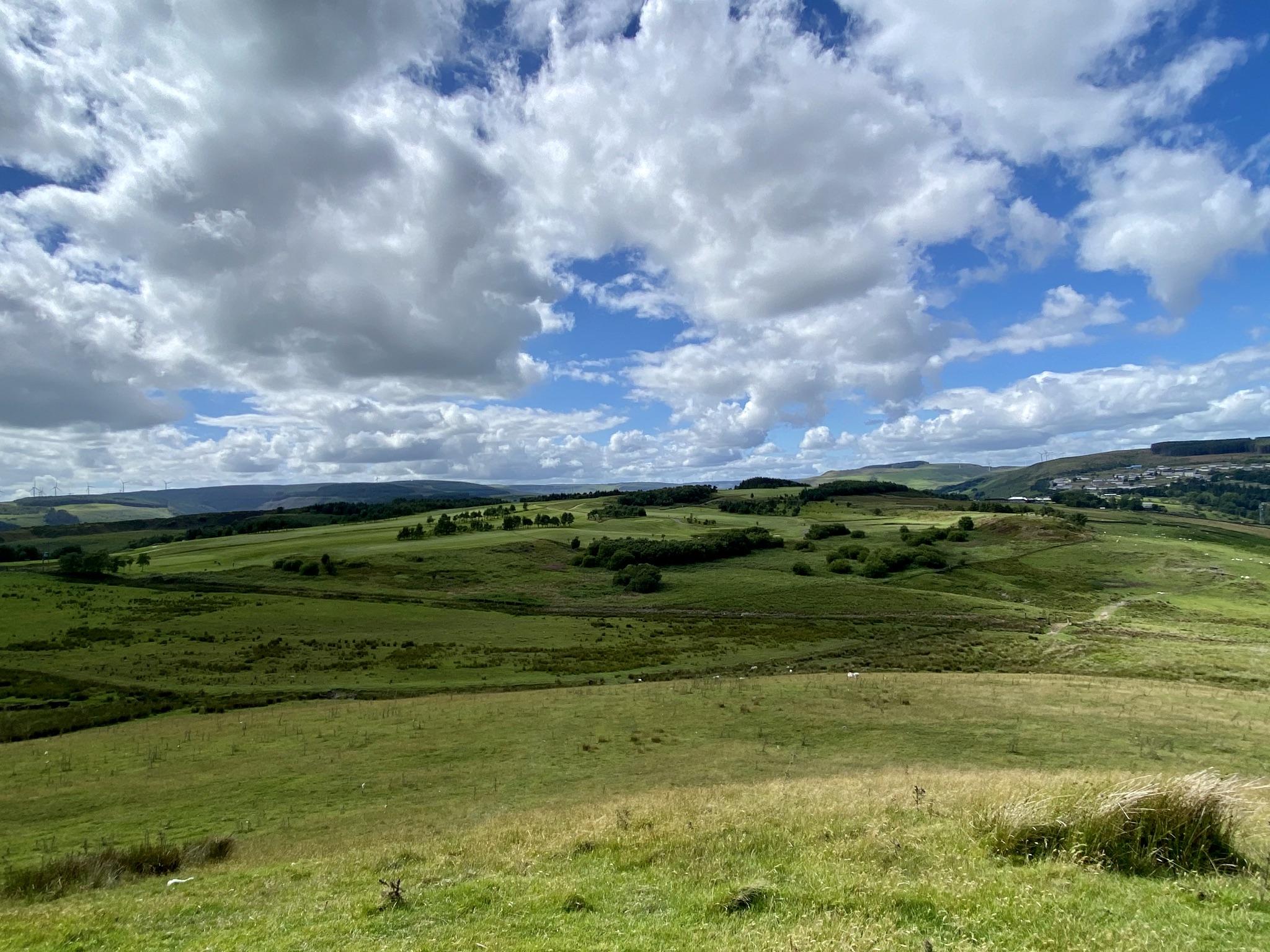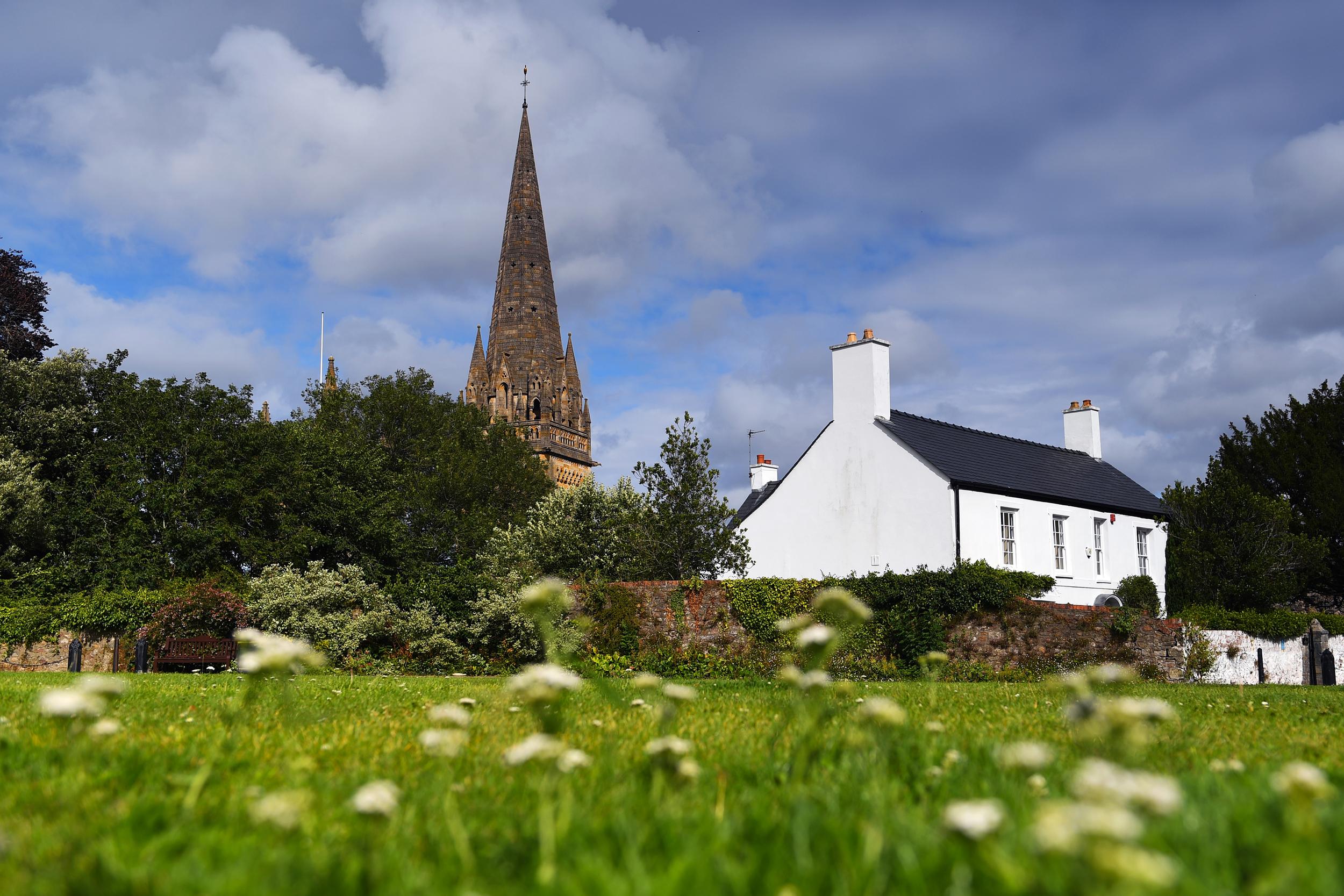
Penrhys pilgrimage way
A medieval pilgrimage route rich in history
by Helen Lloyd Jones
Penrhys in the Rhondda has been a focal point for pilgrimage over many centuries.
Today, you can walk the Penrhys Pilgrimage Way and discover a route rich in history as you travel through the ever changing and gorgeous landscapes of south Wales. The route follows public rights of way for 21 miles from Llandaff Cathedral in Cardiff to Penrhys in the Rhondda. It is divided into six parts and can be walked in sections or over two days.
Don't forget to print a passport and collect all eleven specially designed pilgrim stamps along the way.
There is an map of the whole route on the Penrhys Pilgrimage Way website.
Here's a taster to get you started planning your pilgrimage.
Type : Walk
Distance : 21 miles, but broken down into six sections of 2.5 to 5 miles
Time required : Varies depending on the section or route
Difficulty : Varies depending on the section or route
What to bring : Footwear with good grips are essential and waterproof and warm clothing during the colder months are important too, remember to take water with you
Back to trails page

Pilgrimage grew in popularity in Wales in the 5th and 6th centuries, with the emergence of well known native saints such as St David and St Teilo. With the arrival of the Normans at the end of the 11th century, sites associated with many of these saints were developed into major pilgrimage centres. Some attracted international fame.
In southeast Wales, the most important pilgrimage site at that time was the shrine of St Teilo in Llandaff Cathedral.
By the 15th century, the most popular pilgrimage site in the area was the statue of the Virgin and Child, and nearby holy well, at Penrhys in the Rhondda. It was controlled by the Cistercian Abbey of Llantarnam, who benefitted from the offerings made by pilgrims, who came to seek healing and give thanks. Several Welsh poets composed works praising the Virgin and her holy site.
In 1538, the reforming authorities were so alarmed by the popularity of Penrhys that, under Thomas Cromwell’s orders, the statue of Mary was secretly removed and taken to London. It was burned to ashes alongside Our Lady of Walsingham and Our Lady of Ipswich.
Although the practice of pilgrimage dwindled after the Reformation, the footpaths between Cardiff and Penrhys survived, as did the holy well. In 1953, the Roman Catholic Archdiocese of Cardiff installed a new statue of Mary, carved from Portland stone, on the site of the original Cistercian chapel.

©CrownCopyright2020
Llandaff : Llandaff Cathedral is a real stunner, an eclectic mix of architectural styles and is well worth exploration.
Radyr : One of the early hamlets was called Groeswen, which took its name from a white cross that would have marked the pilgrimage route. A branch of the Mathew family provided hospitality to pilgrims, and Elspeth Matthew sent a considerable weight of candles to Penrhys.
Creigiau : The Castell Mynach farmhouse in Creigiau was built for the Mathew family in the 15th century, and offered hospitality to pilgrims.
Groesfaen : Originally a tiny hamlet, the name means ‘stone cross’ and it is likely that a cross close to St David’s church marked the medieval pilgrimage route.
Llantrisant : Home to a splendid parish church, old cobbled streets, the remains of a castle and a Guildhall, recently renovated as a heritage centre. Edward II was briefly imprisoned in the castle and in 1346, the town was granted a Royal Charter.
Pant y Brâd : Means ‘hollow of treason’ and is situated on the eastern edge of Tonyrefail. A stone tablet, dated 1909, marks the spot where Edward II was said to have been captured in 1326.
Penrhys : One of the most important pilgrimage destinations in Wales in the Middle Ages. According to legend, a very beautiful statue of the Virgin Mary appeared in the branches of an oak tree near the holy well in the 13th century.

Llandaff Cathedral
Llandaff Cathedral has been a place of Christian worship since the time of St Teilo in the 6th century, as evidenced by early pillar crosses in the south aisle.
The present building, built on the site of an earlier church, dates from about 1120. It was extended and modified several times in the Middle Ages. By the early 18th century, it had suffered severe damage and was effectively reconstructed by John Wood. The cathedral was badly damaged by a landmine in 1941 and after the war the building was refurbished by George Pace. Sir Jacob Epstein designed the statue of Christ in Majesty above the nave. The cathedral is also home to Dante Gabriel Rossetti’s triptych Seed of David.
Walking the Penrhys Pilgrimage Way
Join Wunford Emanuel, who walked the route in March 2021 and recorded his experience.
Penrhys Pilgrimage Way
Penrhys in the Rhondda has been a focal point for pilgrimage over many centuries.

©CrownCopyright2020
